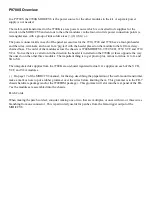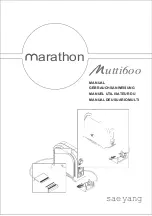
-65-
APPENDIX A — STRETCHING
Stretching is an important component of a well-rounded fitness program. Flexibility is defined as the
range of motion (ROM) available around the joint. Movement around a healthy joint should be confined
to the joint’s functional range of motion. To prevent overstretching, there are two main sensory organs
that assist in monitoring stretch length, speed and tension. Sensory organs transfer information from
the Central Nervous System (CNS) to determine where an individual’s body is in space, known as
kinesthetic awareness. The main sensory organs involved in stretching are the muscle spindles and
the Golgi tendon organs.
MUSCLE SPINDLES
The muscle spindles are the skeletal muscle sensory receptors and are located in the muscle cells
(fibers) that detect changes in the length of the muscle and speed of lengthening.
•
Muscle spindles reflexively stimulate a muscle to contract to prevent overstretching and muscle
fiber damage.
•
This function is a defense mechanism known as the stretch or myotatic reflex.
GOLGI TENDON ORGANS
The Golgi tendon organs (GTOs) are located in the muscle tendon/musculo-tendinous joint.
The GTOs:
•
Monitor strain on the tendon
•
Monitor force production and tension in the muscle
•
Respond when excessive force is created
The inverse stretch reflex (also called autogenic inhibition) is the firing of the Golgi tendon organs to
inhibit or relax a muscle. This is the point to stop further stretching.
CONTRACTING OR STRETCHING?
It is important to identify whether a participant is stretching or isometrically contracting the muscle. If the
body is not supported, it will contract the muscle to ensure that the participant does not fall or go beyond
its ROM. If the feeling of stretch builds or does not fade away over 30 to 60 seconds, the participant is most
likely contracting the muscle instead of stretching. This type of stretching will create tension in the muscle
and limit the increase in flexibility. It can lead to small tears in the muscle fibers, which can result in injury
or soreness the next day called delayed onset muscle soreness (DOMS). This occurs primarily when gravity
is used to assist the stretch. For example, standing on the bike pedals and letting the heel drop is not an
effective stretch for the calf muscles.
APPENDIX
















































